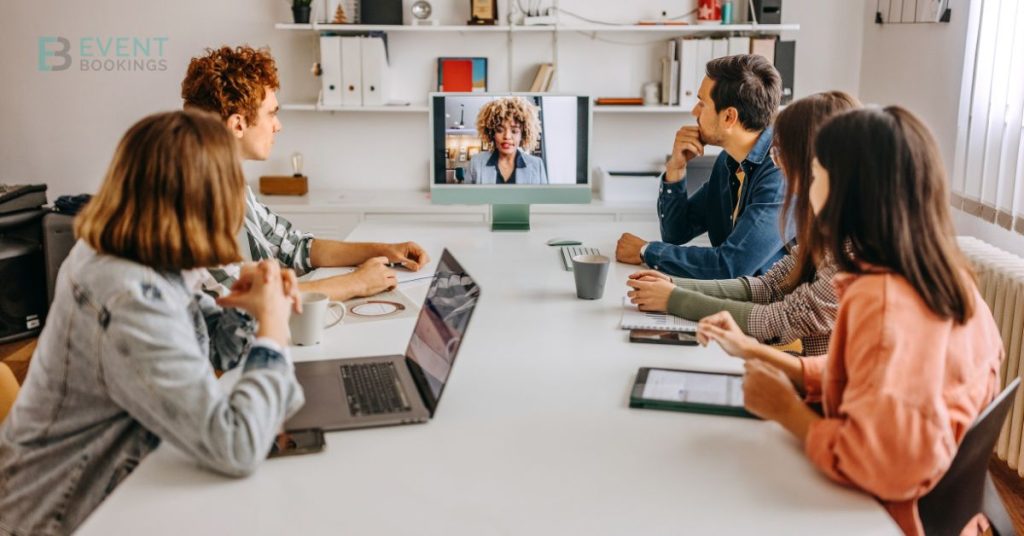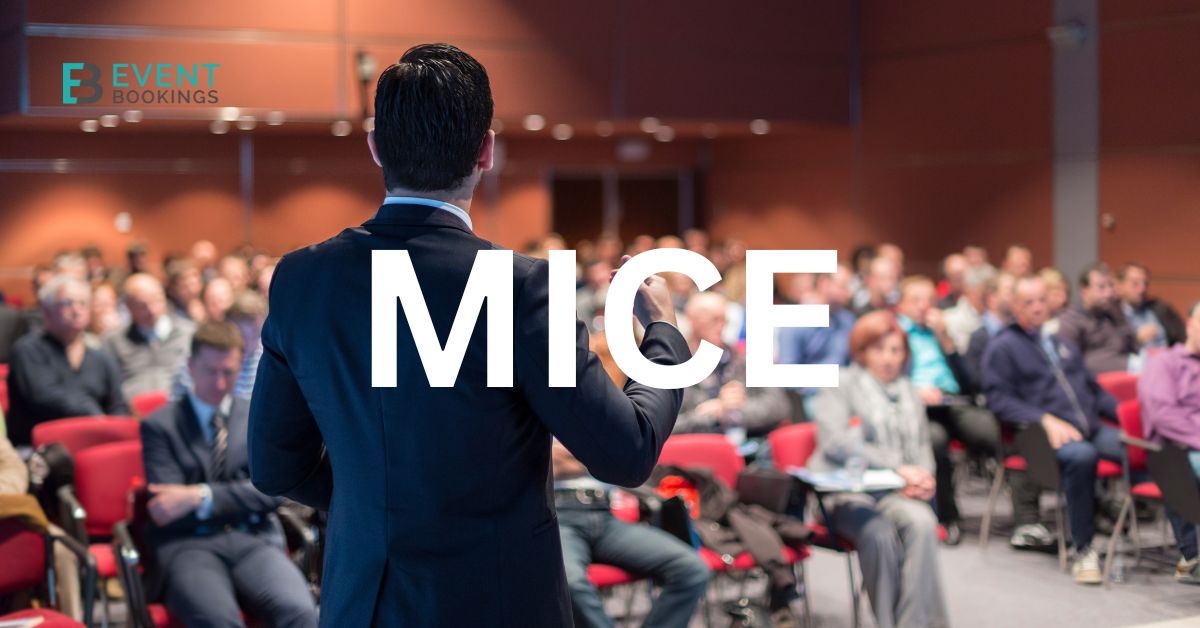The acronym MICE is not a new term if you work as a travel manager or an event planner. MICE is closely associated with the business travel sector and focuses on the planning, arranging, and involvement of participants at conferences and corporate events.
You’re headed in the right direction if you already know that meetings are more concerning than fuzzy rodents. Still, there is plenty more to learn about MICE. In summary, MICE is an essential sector of the hospitality business that can account for more than 50% of a property’s income, depending on how the hotel is set up.
This blog will answer what does MICE represent, discuss various components of MICE events to help you better grasp the idea, discuss its challenges and offer helpful advice on how to host successful MICE events.
What is MICE?
MICE stands for meetings, incentives, conferences, and exhibits. As each sector has events that occur in cycles, this is also a fair proportion of international business trips. In the MICE industry, the primary objectives of meeting professionals, relationship building, innovation, and accelerating growth are always at the forefront.
More recently, generalist terms like “meetings industry” and “events industry” have come into common usage as a generic replacement for MICE. According to an estimate by Statista, the market value of the meetings sector was approximately $9.2 million in 2019, while being forecasted to attain a value of $17.8 million by 2030.MICE often include primarily business events. Concerts and festivals are examples of leisure events that belong to a distinct category. To improve attendance and make the event more memorable, many organisers now incorporate recreational activities into bigger gatherings.
Understanding MICE Events
If you are wondering what mice stand for, the below description will give a broad idea-
Meetings
Meetings generally happen all in one day and at convention centres or hotel conference rooms. They can be small, with few senior executives, or large, for example, annual general shareholder meetings.
It can be used to solve a problem, discuss strategy, and set goals when a group of people is brought together from just one business, sector, or project. There is rarely an entertainment programme, and the catering is frequently kept simple.
Incentives
Incentives are probably the most enjoyable part of the MICE sector. These include any form of travel incentive that a company would give to its workers, groups, or partners. The objectives of an incentive, in this instance, are to show appreciation for outstanding work, to boost morale, or to create more loyalty among employees.
Incentives, depending on what type of business is setting them up, can come in all shapes and sizes. Some may take their team to an out-of-town resort for an all-inclusive weekend getaway. Others may organise any number of local events designed to encourage teamwork in a relaxed environment.
Conferences
Consider conferences to be meetings on a larger scale. Although they can differ in size and can run longer than a day, they typically draw more people than meetings. Conferences can appear extremely different depending on who is organising them and what business they are held in, just like incentives.
Conferences serve a variety of purposes, but typically, they are intended to discuss and resolve issues facing a company or sector. One, a combination of, or all of the following are typical conference activities:
- Presentations
- Panels
- Discussions
- Speeches
- Workshops
Exhibitions
Exhibitions, often known as trade shows, are typically large gatherings that attract thousands of attendees and exhibitors from all over the world. Their duration can range from a few days to a week. Exhibitions usually have a clearly defined target market and are highly industry-specific.
In order to generate business, communicate with current and new partners, and showcase and advertise their goods or services, exhibitors attend trade exhibitions. Professionals from the industry travel to network, acquire jobs or clients and learn new approaches to challenges.
Planning a MICE Event: Key Steps for Success
To guarantee a successful and well-organised event, an effective event planning checklist includes a number of crucial elements. In MICE event management, the following are essential components that must be considered:
Define Objectives and Goals
Any successful event planning process starts with event objectives. These will give focus and direction and act as a standard to gauge success. To move forward, these preparations must be established first, whether you’re planning a formal event or a wedding.
Specific corporate event planning involves a number of steps, such as defining the event’s purpose and setting SMART goals that consider all relevant aspects of the intended target audience to produce measurable outcomes by the event’s conclusion date.
Budgeting and Financial Planning
The budget development should begin by identifying all possible expenses, including location, booth and décor details, AV equipment rentals, catering, events planned around the conference, and marketing materials sent out prior to the event. Staffing needs must also be considered. Values should be estimated using local market conditions or analogous events. Lastly, before the big day, agreements with suppliers and services should be finalised.
Venue Selection and Logistics
First, choose a venue that would attract the targeted audience and have enough space to host exhibitors and attendees. Conduct thorough site visits to analyse the layout for any potential issues that may arise. Check the vendor contracts to ensure services like the supply of electricity, provision of Wi-Fi, and configuration of booths are included. Plan out an extensive floor plan to maximise flow and also allocate space for networking, registration, and presentations.
Marketing and Promotion
Create buzz and hype through social media platforms. This should be followed by focused marketing in front of your target audience. For the event outreach, one can work with trade journals, industry influencers, and relevant blogs, provided the budget allows for it. Send email newsletters regarding changes, special offers, and highlights to subscribers. Design engaging marketing material to convey key messages about the event.
Event Technologies and Tools for MICE Planning

Following is a list of some of the unmatched, top tech tools ruling the MICE landscape:
Event Management Software
Software for event management has now become an essential tool for MICE planners, allowing them to handle every aspect of the event with ease from their single platform. Such software can handle registration, ticketing, budgeting, and scheduling far more easily and precisely than other methods. Automating this stuff makes life much easier for the organisers as they can then focus on the quality of the experience to be delivered rather than getting bogged down by logistic issues. In addition, a variety of other analytics in the tool allow planners to gauge event success, monitor engagement, and refine future events based on real insights.
Virtual and Hybrid Event Options

Virtual and hybrid events have greatly expanded the audience and flexibility of MICE events. Although hybrid events provide in-person and online participation as an alternative for audiences that may need or prefer remote access, they also retain some of the advantages of a live event. With seamless webinar and streaming facilities, event’s organisers can now conduct faultless virtual sessions and workshops, reaching out to larger and more varied audiences. Hybrid formats also open up fresh avenues for interaction, enabling virtual and physical attendees to engage in the same discussions and activities.
Mobile Apps for Attendees
Mobile applications have brought a new dimension to the way participants interact with MICE events: connecting is easy, keeping up-to-date with the latest events and participating in them has become so simple. Event applications allow users to personalise their plans, network with other attendees, and get instant updates; this kind of convenience and participation is vast. Using interactive maps and networking capabilities, a phone becomes a contextual event companion. Attendees are also given a chance to give direct feedback through the app, which allows organisers to adjust and expand the event in real time, as well as for the future.
Essential Tips for MICE Event Attendees
Preparation Before the Event
Preparation in advance of the event sets the stage for having attendees ready and thrilled from the moment they arrive. Organisers of an event should issue a pre-event formalised guide, including the agenda of the event, speaker bios, and some ideas on what to bring in order to enhance the preparation process for attendees. Reminders are necessary on details about registration, how the venue will be laid out, or even pre-event tasks/digital forms that they need to fill out. The more prepared attendees are, the better they will be able to focus on drawing value from the event itself rather than logistical details.
Networking Tips
Other core responsibilities of organisers include designing networking opportunities through the design of dedicated networking spaces and structured interactions that help foster a warm environment in which attendees feel comfortable meeting new people. Hosting an icebreaker session, arranging small-group discussions, or setting up a matchmaking system are good ways to help attendees connect meaningfully. Making this possible enhances not only attendee satisfaction but also amplifies the overall impact and memorability of the event because networking is usually one of the top reasons for MICE participation.
Maximising Learning Opportunities
Organisers should, therefore, make the content exciting, relevant, and varied; these could include keynote sessions, workshops with interactions, panel sessions, and hands-on activities. Moreover, provision for materials like digital guides or access to recording facilities in regard to the sessions for reinforcement after the session may be made available. In return, investment in high-quality content and making sure the attendees have access to resources after the event will make this conference add lasting value to the attendees by helping the organisers make it worthwhile and impactful.
Challenges in MICE Planning and How to Overcome Them
Let’s look at some of the more basic challenges in MICE planning and actionable solutions to each:
1. Budget Constraints
Budget management would be another major challenge, as the expenditure starts to accumulate into high-quality venues, speaker fees, and technical requirements. Organisers must be highly critical when planning activities so that they should be able to prioritise what to spend the budget on, work out a highly detailed budget plan at the outset considering contingencies, and, if possible, negotiate with vendors to get package deals or discounts. It could also be one more strategic way to balance costs and further add value for attendees and sponsors alike by securing sponsorships. A clearly stated financial plan with regular budget reviews would help the organisers avoid over-investment and maintain financial balance during preparation.
2. Logistical Issues
One of the major challenges in MICE planning is logistical coordination, especially when large venues are concerned, there are members from other countries, and there is more variation in event format. It can be difficult to keep track of registrations, accommodation, transport, and schedules, which in turn causes delays and possible misunderstandings. They should, therefore, make investments in integrated event management software to centralise logistical operations with real-time updates for all parties involved. Digital tools that automate scheduling, registration, and attendee communications will be used to lessen logistical stress while ensuring operations flow flawlessly.
3. Engaging Attendees
Finally, there is the issue of ensuring attendee engagement, which can be very problematic for the hybrid or virtual parts of MICE events. In many cases, keeping remote attendees active in the event may be far more difficult since they can be distracted or much less immersed in the event than in-person attendees would normally be. Engagement for virtual attendees can be encouraged through live Q&A sessions, polls, and virtual breakout rooms. For live engagement, the creation of networking areas, the use of gamification, and the provision of post-event resources are sure ways to keep attendees interacting. By actively placing an emphasis on engagement, an event organiser can ensure a dynamic and memorable experience for all participants, whether a virtual or live format is desired.
Sustainability in MICE Events
If we discuss the key purpose of MICE, sustainability will become a key theme in this segment. In order to meet the increasing demand for events that are ecologically conscious, event planners incorporate sustainable techniques, such as eco-friendly venues, less waste, and carbon footprints.
MICE planners have enormous leeway to push sustainability through thoughtful planning and resource management. The best practices for this involve the choice of venues that follow sustainable practices, such as programs related to the reduction of produced waste, the use of renewable energy, and water conservation. Locally outsourcing catering, utilising recyclable or compostable materials, and working with eco-friendly vendors can take an event a long way ecologically.
Effective Tips for Attendees:
- Bring a Reusable Water Bottle: In as many ways as possible, avoid single-use plastics by bringing a refillable bottle for hydration purposes throughout the event.
- Choose Sustainable Transport: Take public transportation, carpool, or take any eco-friendly rideshare options to minimise your footprint as much as possible.
- Utilise Digital Resources: Minimise the need for print copies of agendas, event apps, and other resources digitally.
- Minimise Waste: Trash should be discarded in a recycling bin or compost bin, if one is available. Avoid single-use items when at all possible.
- Green Support: Participate in all sustainability programs or activities that the event has on offer. This could include eco-friendly workshops, networking with vendors who are into sustainability practices.
Future Trends in MICE Events
The MICE industry is constantly changing. The emerging trends rewrite the rules on how professionals and organisations relate to events within the hospitality industry. A few of the major trends that shape the face of MICE events are listed below:
Rise of Hybrid and Virtual Events
Hybrid and virtual events have really opened a whole new dimension of flexibility and accessibility to global audiences for the MICE industry. With technology getting even better, these formats promise to be even more immersive, with enriched interactive experiences and seamless connectivity that will enable remote and in-person attendees to engage equally.
Increased Focus on Wellness and Personalisation
From ‘wellness’ breaks to meditation sessions, unique experiences comprising customised agendas are now at the heart of event planning. More and more, planners are thinking of creating an enabling environment that will support the mental and physical health of every guest by tailoring experiences to individual tastes for maximum impact.
Advanced analytics for Improved Experiences
Analytics is fostering a level of insight into attendees’ behaviour and preferences that’s helping planners truly optimise everything from session timing to the pertinence of topics. Real-time analytics lets organisers adjust on the fly in the events themselves, then execute an unusually targeted post-event experience, increasing satisfaction and overall return.
Final Words
In a word, MICE events are much more than simple meetings. The MICE hospitality industry provides many networking and knowledge sharing opportunities and therefore has a significant potential impact on business, tourism, and intercontinental relations. For the future, sustainability and AI are becoming the significant determinants of the MICE event sector. So, keeping these in mind and following the tips discussed in this post, your next Mice event can be a success.




